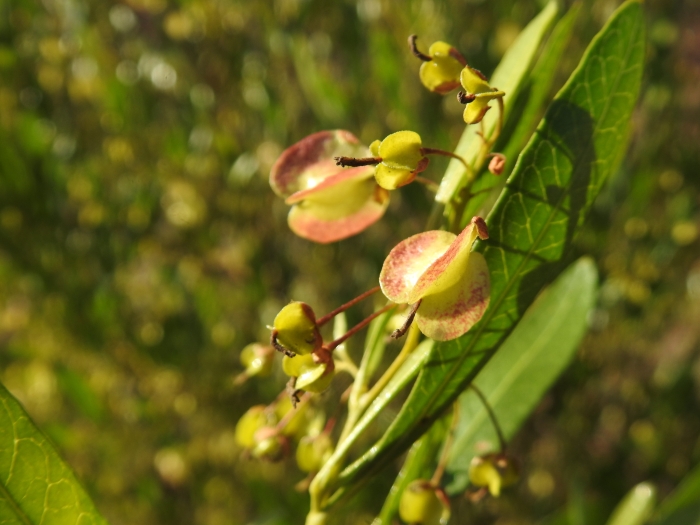Sticky Hop-Bush
(Dodonaea angustifolia)
Sticky Hop-Bush (Dodonaea angustifolia)
/
/

Matthew Fainman
CC BY 4.0
Image By:
Matthew Fainman
Recorded By:
Copyright:
CC BY 4.0
Copyright Notice:
Photo by: Matthew Fainman | License Type: CC BY 4.0 | License URL: http://creativecommons.org/licenses/by/4.0/ | Rights Holder: Matthew Fainman | Publisher: iNaturalist | Date Created: 2020-09-13T16:13:02-07:00 |



















































Estimated Native Range
Summary
Dodonaea angustifolia, commonly known as Sticky Hop-Bush, is an evergreen shrub or small tree native to a wide range of habitats including coastal regions, rocky outcrops, and dry scrubland in Australia, New Zealand, the Pacific Islands, and parts of Africa and the Americas. It typically grows to a height of 12-16 feet (4-5 meters) and a width of 11-15 feet (3.4-4.6 meters), with a dense, bushy habit. The plant is characterized by its sticky, lance-shaped leaves and small, inconspicuous greenish-yellow flowers that bloom in the fall, winter, and spring. The flowers are followed by papery, winged seed capsules that change from green to yellow or reddish as they mature.
Sticky Hop-Bush is valued for its hardiness, low water requirements, and ability to thrive in a variety of soil types, including those with poor fertility. It is often used for windbreaks, hedges, erosion control, and as an ornamental plant in xeriscaping due to its attractive foliage and adaptability to dry conditions. It is also known for its medicinal properties, including the use of its leaves for traditional remedies. In cultivation, it prefers full sun but can tolerate partial shade and requires well-drained soil. While generally pest-resistant, it can be susceptible to scale insects and sooty mold.CC BY-SA 4.0
Sticky Hop-Bush is valued for its hardiness, low water requirements, and ability to thrive in a variety of soil types, including those with poor fertility. It is often used for windbreaks, hedges, erosion control, and as an ornamental plant in xeriscaping due to its attractive foliage and adaptability to dry conditions. It is also known for its medicinal properties, including the use of its leaves for traditional remedies. In cultivation, it prefers full sun but can tolerate partial shade and requires well-drained soil. While generally pest-resistant, it can be susceptible to scale insects and sooty mold.CC BY-SA 4.0
Plant Description
- Plant Type: Shrub, Tree
- Height: 12-16 feet
- Width: 11-15 feet
- Growth Rate: Moderate
- Flower Color: Green, Yellow
- Flowering Season: Fall, Winter, Spring
- Leaf Retention: Evergreen
Growth Requirements
- Sun: Full Sun
- Water: Low
- Drainage: Medium, Fast
Common Uses
Bird Garden, Butterfly Garden, Drought Tolerant, Hedges, Low Maintenance, Street Planting
Natural Habitat
Coastal regions, rocky outcrops, and dry scrubland in Australia, New Zealand, the Pacific Islands, and parts of Africa and the Americas
Other Names
Common Names: Hop Bush, Sand Olive
Scientific Names: , Dodonaea viscosa var. angustifolia, Dodonaea viscosa subsp. angustifolia, Dodonaea viscosa f. angustifolia, Dodonaea angustifolia, Dodonaea salicifolia, Dodonaea eriocarpa var. minor, Dodonaea mundiana, Dodonaea eriocarpa var. waitziana, Dodonaea kingii
GBIF Accepted Name: Dodonaea viscosa subsp. angustifolia (L.fil.) J.G.West